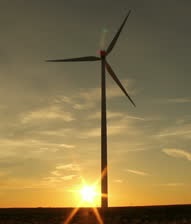AEMO details possible paths
 AEMO has unveiled some future energy planning scenarios.
AEMO has unveiled some future energy planning scenarios.
AEMO has published its 2023 Inputs, Assumptions and Scenarios Report (IASR), which informs its forecasting and planning analysis and publications, including the 2024 Integrated System Plan (ISP).
The IASR was developed through over 12 months of collaboration involving hundreds of stakeholders who provided valuable contributions and feedback during workshops, webinars and forums, along with nearly 70 written submissions to the Draft IASR published in December.
AEMO Executive General Manager System Design, Merryn York, said that three energy planning scenarios were identified that capture the broad range of plausible futures of the National Electricity Market (NEM) in the coming decades.
“We’re grateful for the extensive stakeholder contribution to help develop three scenarios that will inform the planning of our future energy transformation,” Ms York said.
“Stakeholders had an overwhelming response to ensure we considered scenarios that reflect the targeted rapid decarbonisation of the energy sector and pathways to achieve net-zero emissions across the economy.
“The three scenarios reflect growing policy and public commitments to a net-zero economy, while retaining a wide breadth of energy futures to investigate power system needs and transition impacts,” she said.
The three scenarios for the 2023 IASR are:
-
Green Energy Exports – reflects very strong decarbonisation activities domestically and globally, resulting in extremely rapid transformation of Australia’s energy sectors, including a very strong use of electrification, green hydrogen and biomethane.
-
Step Change – is centred on strong decarbonisation consistent with the 2022 ISP’s most likely scenario. It relies on a strong contribution from orchestrated consumer energy resources (CER), strong transport electrification, and opportunities for Australia’s larger industries to electrify to reduce emissions, or to use developing hydrogen production opportunities or other low emissions alternatives to support domestic industrial loads.
-
Progressive Change – explores the challenges of meeting Australia’s current Paris Agreement commitment of 43 per cent emissions reduction by 2030 and net-zero emissions by 2050. In this scenario, transformational energy sector investments continue, but economic and international factors place industrial loads at greater risk. Higher technology costs and supply chain challenges relative to other scenarios slow the pace of change compared to other scenarios.
“The IASR also includes a range of sensitivities identified with stakeholders for special consideration and analysis, particularly for the ISP, where sensitivity analysis enables evaluation of the robustness of the recommended investments that will deliver the future power system at lowest overall cost to consumers,” Ms York said.
These sensitivities address key uncertainties, such as rapid decarbonisation, lower orchestration of behind-the-meter consumer energy resources, alternatives to electrification, and constrained supply chains,” she said.
AEMO will use these inputs, assumptions and scenarios in developing the 2023 Electricity Statement of Opportunities (August 2023), as well as the draft (December 2023) and final 2024 ISP (June 2024).
AEMO has also published a separate IASR consultation summary report, as well as the final 2023 Transmission Expansion Options Report, which includes a range of advanced and conceptual projects that will be considered as potential projects in the 2024 ISP.








 Print
Print